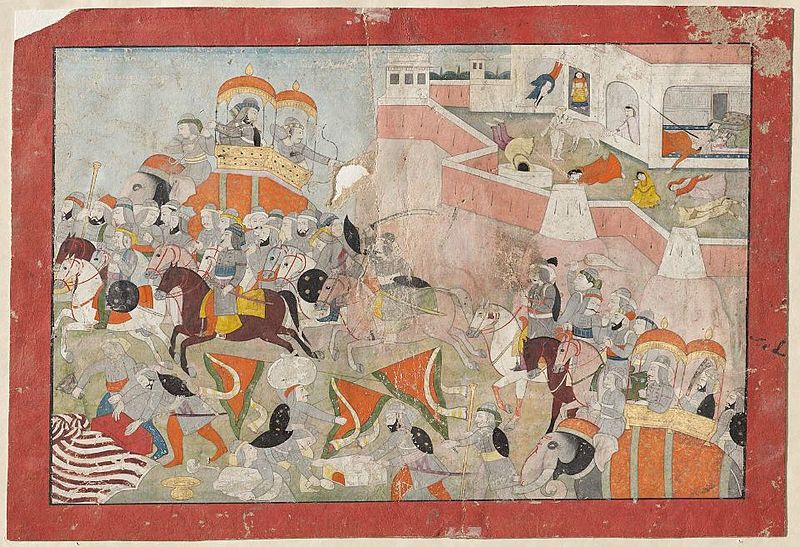Alauddin Khalji established four separate markets in Delhi. To east the peasants living.
Delhi Sultanate Under Khilji Dynasty A Complete Overview
He fixed the prices for a wide range of.

Which sultan introduced market reforms. The most prominent improvement in economic reforms by Alauddin Khilji was his market control policy. They are as follows -. How did Alauddin Khilji regulates the market.
He banned social parties and wine. He introduced four ordinances to prevent repeated revolts. Go to Home Questions History Multiple Choice MCQ.
He issued a set of seven regulations which came to be known as market control measures. Overthrew the Slave dynasty. Alauddin Khilji introduced market reforms___.
Alauddin Khilji introduced the Market Reforms. Which of the following Sultans introduced Market Reforms. Officers called Diwan-i-riyasat were appointed in the offices called Shahana-i-mandi to standardize the market.
He introduced a permanent standing army. Who among the following had introduced market control policy. Ziauddin Barani famous historian of that period describes the market control policy of Sultan Alaudin khilji in his book.
Which of the following sultans introduced market reforms. This view of Barni can be supplemented with that of Amir Khusru. He had to maintain a huge standing army with limited economic resources.
Market Reforms Alauddin. Ghazi Malik was the founder of which dynasty. Alauddin Khilji introduced market reforms.
The introduction of paying salaries in cash to the soldiers led to price regulations popularly called Market Reforms. Introduced price control and rationing. To study the causes that led.
To administer his subjects well B. The most important administrative reform introduced by Alauddin Khilji was aimed at the regulation of the market and control of prices of essential commodities. Alauddin Khilji introduced the Market Reforms.
The Delhi Sultanate ruler Alauddin Khalji r. Alauddin Khilji Ali Gurshasp was the most powerful emperor of the Khalji dynasty who ruled the Delhi Sultanate of the Indian subcontinent. Who of the following Muslim rulers enforced a strict price control system during his time.
He fixed the prices for a wide range of goods including grains cloth slaves and. Very few people exchanged goldsilver for copper and the tokens were easy to forge. View solution The largest standing army of the Delhi Sultanate directly paid by the State was created by _____.
Alauddin khilji 12961316 one of the greatest ruler of delhi sultanate who belongs to khilji dynasty introduce market reform. Who among the following Sultans of Delhi has been described by the historians as the mixture of opposites. The items sold in the market were cloths and luxury goods.
He impounded pious grants and free grants of lands. Alauddin Khilji Alauddin Khilji. Under his market control policy he setup following types of market-.
He restructured the spy system. Alauddin during his reign implemented a number of administrative. It did not remain confined to rural economy but extended to urban market as well.
For running this market smoothly the Sultan had formed certain rules and regulations. Which of the following Sultans introduced Market Reforms. 1296-1316 instituted price controls and related reforms in his empire.
Which Sultan introduced new Department Aamir-e-Kohl. In addition to the military achievements of Alauddin his reign was also well known for the agrarian and market reforms which were introduced by the Sultan. Which of the following Sultans introduced Market Reforms.
Ala-ud-din followed the Divine Right Theory of Kingship. It was modelled based on the Chinese example Kublai Khan issued paper money in China. Objectives The paper is supposed to satisfy the following objectives 1.
Token Currency In c. 1296-1316 instituted price controls and related reforms in his empire. The Sultan introduced a strict price control mechanism by separating each and every market.
A number of factors prompted him to introduce these reforms. The Sultan established separate shopping centers in Delhi for. After sitting on the throne Alauddins desire was to win the whole India.
1329 CE Sultan Muhammad bin Tughlaq introduced a token currency made of copper to replace gold and silver coins. Grain market Impact of reforms Market officials Market reforms Price control. Also known as Hazar Dinari.
It required a large army. 1296-1316 instituted price controls and related reforms in his empire. Barni has mentioned this in his book Tarikhe Firozshahi.
ALAUDDIN KHALJIMARKET REFORMS The reign of Alauddin Khalji was marked by a period of expansion conquests and annexation as well as the brave counter to the Mongols. Market reforms of Alauddin Khalji From Wikipedia the free encyclopedia In the early 14th century the Delhi Sultanate ruler Alauddin Khalji r. He says that sultan introduced these reforms for the general welfare of the people and these were intended to ensure the supply of important commodities for the benefit of common people as also collect food grains for the royal treasury at prescribed rates to combat famines.
Alauddin Khalji was the first ruler who introduced Market control policy. View solution The two principal monuments of Alauddin Khalji reign - the Alai Darwaza and Jama at Khana Masjid - were constructed at _____. The Sultans ordinance proclaimed that all items ranging in price from 1 tanka to 10000 tanka should be brought to Sher-i-Adl and must be sold at fixed price.
The market reform of Alauddin Khilji was one of the most effective and far reaching economic regulations of the Sultanate period. Which Sultan of Delhi introduced measures for improving the quality of fruits.

Reforms Made By Alauddin Khilji Alauddin Khalji And His Administrative Reforms
Komentar